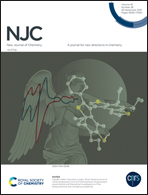Salt sealing strategy to prepare N,O-codoped porous bio-carbon derived from Ephedra Herb for supercapacitors†
Abstract
Herein, unique N,O-codoped porous biocarbon (PB) was prepared using Ephedra Herb (EH) as a precursor via a green and sustainable NaCl-sealing strategy and subsequent pyrolysis method. PB possesses vast microstructure, interlinked pores, and high specific surface area, which can facilitate ion adsorption and buffering to improve its properties as an electrode material. In addition, the high specific surface area, well-developed porosity, and abundant heteroatoms in EH are retained well owing to the salt-sealing approach, contributing to additional pseudocapacitance. Therefore, a typical PB sample (S12), obtained from the NaCl-sealing and pyrolysis of the mixture of EH and NaCl at a mass ratio of 1 : 2, is endowed with high specific capacitance, excellent rate performance, and performance retention over long-term cycling. Most importantly, an aqueous symmetrical supercapacitor (S12//S12) assembled with S12 electrodes has a superior specific energy density of 11.6 W h kg−1 at a specific power density of 450.1 W kg−1 in Li2SO4 electrolyte. This work confirms the utility of a NaCl-sealing strategy for designing high specific surface area biocarbon materials that are ultra-rich in micropores, and it sheds some light on the use of sustainable and low-cost synthetic carbon that is ultra-rich in micropores to meet energy-storage device requirements.



 Please wait while we load your content...
Please wait while we load your content...